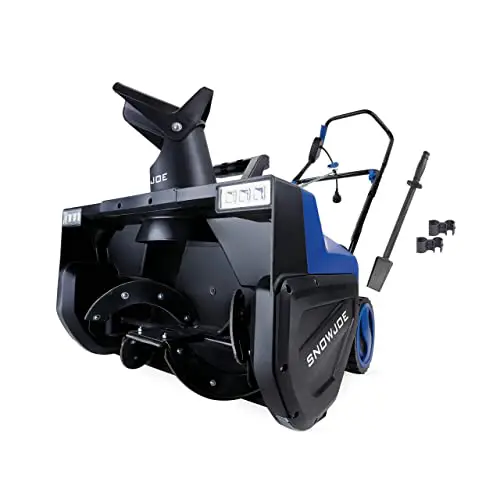To prevent pool cover sagging, try these 9 methods. Looking for ways to keep your pool cover from sagging?
Below, we have compiled nine effective techniques that will help you maintain a tight and secure cover for your pool. Proper installation, regular maintenance, and the use of support devices such as pool cover pumps and air pillows are some of the key strategies to prevent sagging.
Additionally, keeping the cover clean, removing excess water, and avoiding heavy objects on top of the cover are important steps in maintaining its integrity. By following these methods, you can ensure that your pool cover stays in good shape and provides effective protection for your pool throughout the year.

Credit: allsafepool.com
Understanding Pool Cover Sagging
Pool cover sagging is a common issue that many pool owners face. It occurs when the pool cover starts to droop or sink in certain areas, creating sagging pockets of water or debris. This not only affects the appearance of your pool but can also cause damage to the cover itself, leading to costly repairs or replacements.
To address this problem effectively, it is important to understand what causes pool cover sagging and the importance of preventing it.
What Causes Pool Cover Sagging?
There are several factors that can contribute to pool cover sagging. Here are some common culprits:
- Heavy rain or snowfall: Excessive weight from rainwater or snow can accumulate on the pool cover, causing it to sag.
- Debris buildup: Leaves, sticks, and other debris that accumulate on the cover can add weight and lead to sagging.
- Aging or damaged covers: Over time, pool covers can deteriorate or become damaged, making them more prone to sagging.
- Insufficient support: Inadequate support systems, such as worn-out straps or insufficient cover anchors, can contribute to sagging.
The Importance Of Preventing Pool Cover Sagging
Preventing pool cover sagging is crucial for maintaining the integrity of your pool and ensuring its longevity. Here are some reasons why it is important to address this issue promptly:
- Protects the pool: A sagging pool cover can allow water, debris, and sunlight to penetrate the pool, leading to potential water contamination, increased chemical usage, and algae growth.
- Preserves the cover: By preventing sagging, you can extend the lifespan of your pool cover, saving you the expense of a premature replacement.
- Enhances safety: A sagging cover may create uneven surfaces or gaps, increasing the risk of accidents, especially for children or pets.
- Maintains aesthetic appeal: A sagging pool cover can make your pool look neglected and unattractive. By keeping the cover taut and in good condition, you can maintain a visually appealing pool area.
Taking proactive measures to prevent pool cover sagging is essential for keeping your pool in optimal condition. In the following sections, we will explore nine effective methods to address this problem and ensure a well-maintained pool cover. Stay tuned!
Method 1: Investing In A High-Quality Pool Cover
High-quality pool covers are essential for ensuring the longevity and functionality of your pool. When it comes to preventing sagging, investing in a durable cover is the first and foremost method you should consider. A high-quality pool cover offers a range of features that make it more reliable and effective in keeping your pool safe from debris and maintaining its structural integrity.
Here are the key points to look for when purchasing a top-notch pool cover:
Features To Look For In A High-Quality Pool Cover:
- Durability: A strong and durable cover is crucial in withstanding the elements and preventing sagging over time. Look for covers made from robust materials that can withstand exposure to the sun, rain, and harsh weather conditions. Reinforced seams and double-stitched edges are also indicators of durability.
- Uv resistance: The harmful uv rays from the sun can cause the material of a pool cover to deteriorate over time. Opt for a cover that offers excellent uv resistance to prevent sagging and fading.
- Weight load capacity: A pool cover with a high weight load capacity can better withstand the weight of debris, snow, or even the occasional curious animal. Ensure the cover is designed to handle the specific load you expect it to bear.
- Secure fastening: A secure fastening system, such as robust straps or a reliable locking mechanism, is crucial for keeping the cover in place. This prevents gaps and sagging that can occur when the cover is not tightly secured.
- Proper fit: A good pool cover should fit your pool snugly without any gaps or loose ends. Look for covers that are available in different sizes or offer customizable options, ensuring a proper fit for your pool’s dimensions.
How A Durable Cover Prevents Sagging:
- Resists water accumulation: A durable pool cover is designed to repel water effectively, preventing it from pooling on the surface and causing sagging. The material and design of the cover should allow for proper drainage and prevent excessive water accumulation.
- Withstands heavy debris: A sturdy cover can handle the weight of fallen leaves, branches, and other debris without sagging. Its robust structure helps maintain a taut surface, ensuring debris doesn’t accumulate and strain the cover.
- Sustains shape and tension: A high-quality cover maintains its shape and tension throughout its lifespan. Even when subjected to external factors, such as wind or snow, a durable cover remains taut, preventing any sagging that could compromise its effectiveness.
Investing in a high-quality pool cover with the right features not only prevents sagging but also offers superior protection for your pool. Remember to prioritize durability, uv resistance, weight load capacity, secure fastening, and proper fit when selecting your pool cover.
By doing so, you can enjoy a well-maintained pool and extend the lifespan of your cover.
Method 2: Proper Pool Cover Installation
Step-By-Step Guide To Correctly Installing A Pool Cover
Installing a pool cover properly is crucial in preventing sagging and ensuring its effectiveness. Here’s a step-by-step guide to help you with the installation process:
- Measure the pool dimensions: Take accurate measurements of your pool’s length and width. This information will help you choose the right-sized cover.
- Clean the pool surface: Before placing the cover, make sure your pool is clean and free from any debris, leaves, or dirt. This will prevent any damage to the cover and ensure a snug fit.
- Position the cover: Start by aligning one edge of the cover with the pool’s edge. Slowly unroll the cover across the pool surface, ensuring it spans from one end to the other.
- Anchor the cover: Secure the cover in place using the provided anchors or water bags. Attach the anchor straps tightly to prevent the cover from shifting or sagging.
- Tension the cover: To maintain proper tension, utilize the tension springs or winch system included with the cover. This will help prevent the cover from sagging and promote durability.
- Confirm even distribution: Ensure that the cover is evenly distributed across the pool’s surface. If necessary, adjust the tension and position of the cover to achieve a uniform appearance.
- Trim excess material: If your cover is larger than your pool, carefully trim any excess material to avoid unnecessary weight and sagging. Use sharp scissors or a utility knife for precise cutting.
- Regular maintenance: Regularly inspect and clean your pool cover to prevent debris accumulation and maintain its longevity. Remove any standing water or leaves that may collect on the cover’s surface.
The Impact Of Proper Installation On Preventing Sagging
Proper installation of a pool cover plays a significant role in preventing sagging and ensuring its effectiveness over time. Here are a few key reasons why proper installation matters:
- Secure fit: When a pool cover is installed correctly, it fits tightly and securely over the pool. This eliminates space for sagging and minimizes the risk of damage from wind or other external elements.
- Tension and support: Properly installed covers are tensioned and supported, reducing the likelihood of sagging. The tightness and support prevent the cover from sinking into the water, maintaining its shape and functionality.
- Weight distribution: An evenly distributed cover places equal pressure on all areas, preventing concentrated weight that can lead to sagging. Proper installation ensures the cover is distributed uniformly, exerting balanced force across the pool’s surface.
- Durability and lifespan: With the right installation, a pool cover can withstand the elements and regular use for an extended period. Sagging puts unnecessary strain on the cover’s material, potentially causing tears or premature wear. By following proper installation methods, you can maximize the cover’s durability and lifespan.
- Aesthetics and cleanliness: A well-installed pool cover maintains an aesthetically pleasing appearance, creating a neat and tidy pool area. Additionally, it keeps debris, leaves, and other unwanted elements out of the pool, simplifying maintenance and reducing the need for frequent cleaning.
By following these step-by-step installation guidelines and understanding the impact of proper installation on preventing sagging, you can ensure the longevity and effectiveness of your pool cover. Don’t underestimate the importance of a well-installed cover—it’s the key to enjoying a clean, well-protected pool all year round.
Method 3: Regular Cleaning And Maintenance
A sagging pool cover not only looks unappealing but also reduces its effectiveness in protecting your pool. Regular cleaning and maintenance play a crucial role in preventing sagging and ensuring that your pool cover remains in optimal condition. By following these effective cleaning techniques, you can keep your pool cover taut and prolong its lifespan.
Why Cleaning And Maintaining A Pool Cover Is Crucial:
- Removes debris: Regular cleaning helps remove leaves, sticks, and other debris from the pool cover, preventing excess weight from accumulating and causing sagging.
- Prevents mold and mildew growth: Cleaning the pool cover regularly helps prevent the growth of mold and mildew, which can weaken the fabric and contribute to sagging.
- Maintains cover flexibility: Cleaning the cover prevents the accumulation of dirt and grime, which can make the fabric brittle and less flexible, leading to sagging issues.
- Promotes water runoff: Keeping the cover clean allows water to drain properly, preventing excess weight from accumulating and causing the cover to sag.
Effective Cleaning Techniques To Prevent Sagging:
- Remove debris: Use a leaf blower, a soft broom, or a pool cover pump to remove leaves, sticks, and other debris from the pool cover. Be gentle to avoid damaging the cover.
- Use a mild detergent: Fill a bucket with water and add a mild detergent. Use a soft brush or a sponge to scrub the cover gently. Rinse thoroughly with water and allow it to dry completely.
- Avoid harsh chemicals: Harsh chemicals can weaken the fabric, so it’s best to avoid them when cleaning your pool cover.
- Inspect for mold or mildew: Regularly inspect your pool cover for any signs of mold or mildew. If you notice any growth, clean the affected area with a solution of water and white vinegar. Rinse thoroughly and allow it to dry completely.
- Tighten straps or cables: Check the tension of the straps or cables holding the pool cover. Adjust them as needed to ensure the cover is pulled taut.
- Remove standing water: Use a pool cover pump to remove any standing water from the cover. Excess water can contribute to sagging and cause damage over time.
Regularly cleaning and maintaining your pool cover is essential to prevent sagging and ensure its effectiveness in keeping your pool clean. By following these simple yet effective techniques, you can keep your pool cover in great shape for years to come.
Method 4: Using A Pool Cover Pump
A pool cover pump can play a crucial role in preventing sagging of your pool cover. Here’s how you can effectively use a pool cover pump to keep your pool cover in perfect shape:
- Consider the size: When choosing a pool cover pump, make sure to select the right size that is suitable for your pool cover. It should be able to handle the water accumulation on the cover without any issues.
- Opt for automatic options: Look for a pool cover pump that comes with automatic features. These pumps can detect the water build-up on the cover and automatically start pumping it out. This ensures that your pool cover stays taut and free from sagging.
- Position the pump strategically: Proper placement of the pump is essential for efficient water removal. Aim to position the pump at the lowest point of the cover to ensure effective drainage. This will help in preventing any water from accumulating and causing sagging.
- Regular maintenance: It is important to maintain your pool cover pump to ensure its optimal performance. Clean the pump regularly to remove any debris or blockages that might hinder its functionality. Regular maintenance will help prolong the life of the pump and keep it working efficiently.
- Inspect for any damages: Periodically check the pump for any damages or malfunctions. Look out for any leaks, cracked connections, or signs of wear and tear. Addressing these issues promptly will help prevent any further damage and ensure the pump’s effectiveness in preventing sagging.
By using a pool cover pump correctly, you can effectively prevent sagging and extend the lifespan of your pool cover. So, make sure to choose the right pump, position it strategically, and provide regular maintenance to enjoy a well-maintained pool cover throughout the seasons.
Method 5: Removing Excess Weight From The Pool Cover
Has your pool cover started sagging? Excess weight from debris and water can cause this problem, but worry not! In this section, we’ll explore effective strategies for removing unwanted weight from your pool cover. By following these methods, you can ensure your pool cover stays in excellent condition and prevents any potential damage.
Factors Contributing To Excess Weight On The Pool Cover:
- Accumulated debris: Leaves, twigs, and other debris that fall into your pool can collect on the cover, gradually adding weight.
- Rainwater and snow: If your pool cover is not properly drained, rainwater and melted snow can accumulate, making the cover sag.
Strategies For Removing Debris And Water To Prevent Sagging:
- Use a pool brush: Gently sweep off any debris sitting on top of the pool cover. Start from the center and work your way towards the edges.
- Invest in a pool cover pump: Consider getting a pool cover pump to remove excess water. Place the pump on the cover and let it do the work for you.
- Use a leaf net: A leaf net can be placed on top of the pool cover to catch leaves and other large debris, making it easier to remove them.
- Install a pool cover support system: These systems consist of inflatable air pillows or solid support blocks placed strategically under the cover. They help distribute the weight evenly and prevent sagging.
- Create a small slope: If your pool cover is flat, water can accumulate. By creating a slight slope using foam pieces or a pool cover drain, you can ensure water is directed towards a designated area for easier removal.
- Regular maintenance: Schedule regular maintenance sessions to clean your pool cover and prevent debris buildup. This will help maintain its longevity and prevent excessive weight from accumulating.
By implementing these strategies, you can effectively remove excess weight from your pool cover and keep it from sagging. Remember, regular maintenance and preventive measures are key in ensuring the durability and functionality of your pool cover.
Method 6: Adjusting The Pool Cover Tension
When it comes to keeping your pool cover from sagging, one effective method is adjusting the tension of the cover. By properly adjusting the tension, you can ensure that the cover is taut and evenly distributed, minimizing the risk of sagging.
Here are step-by-step instructions for adjusting the tension of your pool cover:
- Locate the tensioning straps or cables on your pool cover. These are typically positioned along the edges of the cover and can be adjusted to increase or decrease the tension.
- Start by releasing the tension on the straps or cables. This can be done by loosening the buckles or adjusting the tensioning mechanism.
- Carefully walk around the pool cover, making sure to distribute your weight evenly. This will help to loosen any areas that may be overly tight.
- Once you have released the initial tension, begin tightening the straps or cables. Gradually increase the tension, making small adjustments at a time.
- As you tighten the straps or cables, periodically check the tension across the entire cover. Look for any areas that may be sagging or where the cover is too tight.
- Continue to adjust the tension until the cover is evenly taut across the entire pool. The goal is to have a slight tension that allows for proper drainage and prevents sagging.
- Finally, secure the straps or cables in place by fastening the buckles or tightening the tensioning mechanism.
Remember, it’s important not to over-tighten the cover, as this can lead to unnecessary strain and potential damage. By properly adjusting the tension of your pool cover, you can effectively prevent sagging and prolong the life of your cover. So, give it a try and enjoy a well-maintained pool throughout the year!
Method 7: Employing Reinforcement Techniques
Reinforcing The Pool Cover To Prevent Sagging
Is your pool cover starting to sag? Don’t worry, there are ways to reinforce it and keep it from losing its shape. By employing reinforcement techniques, you can ensure that your pool cover stays taut and functional. Here are some tips to consider:
- Use additional support systems: Adding extra support to your pool cover can help distribute the weight evenly and prevent sagging. Consider using the following support systems:
- Cover support poles: Positioning support poles underneath the cover at regular intervals can provide extra stability and prevent sagging.
- Reinforcement straps: Installing reinforcement straps across the width of the cover can help keep it in place and minimize sagging.
- Support frames: Using support frames specifically designed for pool covers can provide excellent reinforcement and prevent sagging.
- Consider adjustable support systems: Some support systems allow you to adjust the tension or height, giving you more control over the cover’s shape and preventing sagging. Adjustable support systems to consider include:
- Telescopic support poles: These poles can be extended or retracted to adjust the tension and prevent sagging.
- Flexible support frames: Frames made from flexible materials can be bent and shaped to fit the cover more precisely, reducing sagging.
- Regularly inspect and adjust: To maintain the effectiveness of your reinforcement techniques, it’s important to regularly inspect your pool cover and make any necessary adjustments. Check for any signs of sagging and ensure that the support systems are properly positioned and tightened.
- Consider professional installation: If you’re unsure about the best way to reinforce your pool cover or want to ensure it’s done correctly, consider hiring a professional for installation. They have the expertise and knowledge to recommend the most suitable reinforcement techniques for your pool cover.
By employing these reinforcement techniques, you can effectively prevent sagging in your pool cover and keep it looking and functioning its best. Regular maintenance and inspections will help ensure that your cover remains in optimal condition, providing you with a clean and safe pool area.
Method 8: Protecting The Pool Cover From Sharp Objects
When it comes to keeping your pool cover from sagging, one of the most important aspects to consider is protecting it from potential hazards. Sharp objects can easily puncture or tear the cover, causing it to sag and lose its effectiveness.
To ensure that your pool cover remains in top condition, it’s essential to implement precautions that will safeguard it from sharp objects.
Identifying Potential Hazards That Can Cause Sagging:
- Debris: Fallen branches, twigs, or sharp leaves can puncture the cover if not removed promptly.
- Pets: Your furry companions might accidentally scratch or bite the cover while playing around the pool area.
- Toys and pool accessories: Sharp-edged toys or heavy objects can cause damage if left on the pool cover.
- Lawn equipment: Be cautious when using lawnmowers or trimmers near the pool cover, as they can unintentionally cut or tear it.
- Furniture: Keep furniture with sharp edges or metal parts away from the pool cover to prevent accidental damage.
Implementing Precautions To Avoid Damage:
- Regular cleaning: Remove debris, leaves, and branches from the pool area to reduce the risk of punctures.
- Cover storage: Store the pool cover in a secure place when not in use, away from potential sharp objects.
- Pet supervision: Keep an eye on your pets when they are near the pool area to prevent any accidents or damage to the cover.
- Safe toy storage: Teach children to pick up their toys and store them properly after swimming to prevent any sharp objects from being left on the cover.
- Off-limits area: If possible, create a designated area near the pool where sharp-edged furniture or objects are not allowed.
- Pruning nearby plants: Trim any overhanging branches or plants near the pool area that could potentially damage the cover.
Remember, protecting your pool cover from sharp objects is crucial to prevent sagging and ensure its longevity. By identifying potential hazards and implementing necessary precautions, you can enjoy a well-maintained pool cover that keeps your pool clean and protected.
Method 9: Regular Inspections And Repairs
Regular inspections and repairs are crucial for maintaining the integrity and functionality of your pool cover. By addressing any sagging issues promptly, you can prolong the lifespan of your cover and ensure it continues to effectively protect your pool. Here’s a breakdown of the importance of inspecting the pool cover regularly and how to identify and repair sagging problems:
The Importance Of Inspecting The Pool Cover Regularly:
- Prevents small issues from becoming major problems: Regular inspections allow you to catch any sagging issues early on, before they worsen and potentially cause additional damage to your pool cover.
- Maintains the cover’s aesthetic appeal: By monitoring and addressing sagging problems, you can ensure that your pool cover remains taut and visually appealing.
- Extends the cover’s lifespan: Taking the time to inspect and repair sagging issues helps prolong the lifespan of your pool cover. This saves you money in the long run since you won’t need to replace it as frequently.
How To Identify And Repair Sagging Issues:
- Inspect the cover for visible sagging: Look for areas where the cover appears loose or droopy. This is usually a sign of sagging due to water accumulation or wear and tear.
- Check the water level beneath the cover: Excessive water accumulation beneath the cover can cause sagging. Use a pump to remove any standing water.
- Evaluate the cover’s tension: If the cover feels loose or has significant give when pressed, it may require readjustment or repair.
- Repair minor sagging issues: Small sagging problems can often be fixed by tightening the cover’s straps or fasteners. Follow the manufacturer’s instructions for the best approach.
- Consider professional repairs for major sagging: If the sagging is severe or persists despite attempts to fix it, it’s best to consult a professional pool cover repair service. They have the expertise and tools to address complex issues effectively.
Regular inspections and repairs play a vital role in keeping your pool cover from sagging. By staying proactive and addressing sagging problems promptly, you can enjoy a sturdy and reliable cover that protects your pool for years to come.
Conclusion
To prevent your pool cover from sagging, it’s important to take proactive measures throughout the year. Regularly clean and remove debris from the cover to prevent excess weight that can lead to sagging. Consider using a pool cover pump to remove accumulated water, especially during heavy rain or snowfall.
Utilizing support systems, such as pool cover support brackets or inflatable air pillows, can help distribute the weight evenly and prevent sagging. Adjusting the tension of the cover and ensuring it is secure with proper straps and anchors is essential.
If your cover does start to sag, consider using a cover patch kit or contacting a professional for repair. By implementing these nine methods, you can effectively keep your pool cover in excellent condition and extend its lifespan, making your pool maintenance easier and more efficient.







